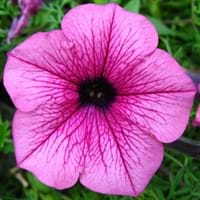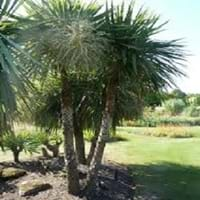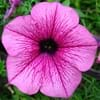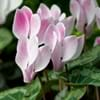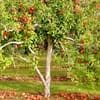Life Span
Annual
Perennial
Type
Flowering Plants, Shrubs
Broadleaf Evergreen
Origin
South America
New Zealand
Types
Grandiflora Petunias, Multiflora Petunias, Wave Petunias, Superbell Petunias, Supertunia Petunias
Not Available
Number of Varieties
Not Available
Habitat
Terrestrial
Coastal Regions
USDA Hardiness Zone
9-10
8-11
AHS Heat Zone
Not Available
Not Available
Sunset Zone
not provided
21,22
Habit
Not Available
Upright/Erect
Flower Color
Blue, Pink, Purple, Red, White, Yellow
White
Flower Color Modifier
Not Available
Bicolor
Fruit Color
Not Available
White, Blue
Leaf Color in Spring
Golden Green
Burgundy, Dark Red, Copper
Leaf Color in Summer
Green
Burgundy, Dark Red, Copper
Leaf Color in Fall
Green
Burgundy, Dark Red, Copper
Leaf Color in Winter
Green
Burgundy, Dark Red, Copper
Leaf Shape
Ovate
Long Narrow
Plant Season
Summer
Spring, Summer, Fall, Winter
Sunlight
Full Sun, Partial shade
Full Sun, Partial Sun, Partial shade
Type of Soil
Loamy, Sandy
Loam, Sand
The pH of Soil
Neutral
Neutral, Alkaline
Soil Drainage
Well drained
Well drained
Bloom Time
Fall, Spring, Summer
Late Spring, Early Summer, Summer
Tolerances
Pollution
Drought, Salt
Where to Plant?
Container, Ground, Pot
Ground
How to Plant?
Seedlings, Transplanting
Stem Planting, Transplanting
Plant Maintenance
Medium
Medium
Watering Requirements
Keep the ground moist but not water-logged, Requires regular watering, Requires watering in the growing season
Average Water Needs
In Summer
Lots of watering
Lots of watering
In Spring
Moderate
Moderate
In Winter
Average Water
Average Water
Soil pH
Neutral
Neutral, Alkaline
Soil Type
Loamy, Sandy
Loam, Sand
Soil Drainage Capacity
Well drained
Well drained
Sun Exposure
Full Sun, Partial shade
Full Sun, Partial Sun, Partial shade
Pruning
Cut or pinch the stems, Do not prune during shooting season, Remove dead or diseased plant parts, Remove deadheads
Prune if you want to improve plant shape, Remove damaged leaves, Remove dead leaves
Fertilizers
All-Purpose Liquid Fertilizer
All-Purpose Liquid Fertilizer
Pests and Diseases
Aphids, Bacterial Blight, Caterpillars, Gray mold, Leaf spot, Powdery mildew, Root rot, Spider mites, Thripes, Verticillium Wilt, Viruses
Red blotch
Plant Tolerance
Drought
Drought
Flowers
Yes
Insignificant
Flower Petal Number
Not Available
Single
Fragrant Bark/Stem
Yes
No
Foliage Texture
Medium
Coarse
Foliage Sheen
Matte
Not Available
Attracts
Butterflies, Hummingbirds
Caterpillar, Moths
Allergy
Not Available
Asthma
Aesthetic Uses
Beautification, Bouquets, Showy Purposes
Beautification, Landscape Designing, Showy Purposes
Beauty Benefits
Not Available
Not Available
Environmental Uses
Air purification
Air purification
Medicinal Uses
Not Available
Diabetes, Dysentry, Stomach pain
Part of Plant Used
Flowers
Leaves, Root, Stem
Other Uses
Showy Purposes
Decoration Purposes, Employed in herbal medicine, Showy Purposes, Used As Food, Used as Ornamental plant
Used As Indoor Plant
Yes
No
Used As Outdoor Plant
Yes
Yes
Garden Design
Bedding Plant, Container, Edging
Container, Feature Plant, Foundation, Houseplant, Screening, Wind Break, Tropical
Botanical Name
Petunia
CORDYLINE australis 'Red Star'
Common Name
Petunia
Cabbage Palm
In Hindi
Petunia
गोभी पेड़
In German
Petunie
Cabbage tree
In French
Pétunia
arbre de chou
In Spanish
Petunia
árbol de la col
In Greek
πετούνια
λάχανο δέντρο
In Portuguese
Petúnia
repolho árvore
In Polish
Petunia
kapusta drzewo
In Latin
Petunia
brassica ligno
Phylum
Streptophyta
Magnoliophyta
Class
Magnoliopsida
Liliopsida
Order
Solanales
Asparagales
Family
Solanaceae
Asparagaceae
Clade
Angiosperms, Asterids, Eudicots
Angiosperms, Monocots
Tribe
Not Available
Not Available
Subfamily
Petunioideae
Lomandroideae
Season and Care of Petunia and Cabbage Tree
Season and care of Petunia and Cabbage Tree is important to know. While considering everything about Petunia and Cabbage Tree Care, growing season is an essential factor. Petunia season is Summer and Cabbage Tree season is Summer. The type of soil for Petunia is Loamy, Sandy and for Cabbage Tree is Loam, Sand while the PH of soil for Petunia is Neutral and for Cabbage Tree is Neutral, Alkaline.
Petunia and Cabbage Tree Physical Information
Petunia and Cabbage Tree physical information is very important for comparison. Petunia height is 5.00 cm and width 2.50 cm whereas Cabbage Tree height is 610.00 cm and width 240.00 cm. The color specification of Petunia and Cabbage Tree are as follows:
Petunia flower color: Blue, Pink, Purple, Red, White and Yellow
Petunia leaf color: Golden Green
Cabbage Tree flower color: White
- Cabbage Tree leaf color: Burgundy, Dark Red and Copper
Care of Petunia and Cabbage Tree
Care of Petunia and Cabbage Tree include pruning, fertilizers, watering etc. Petunia pruning is done Cut or pinch the stems, Do not prune during shooting season, Remove dead or diseased plant parts and Remove deadheads and Cabbage Tree pruning is done Prune if you want to improve plant shape, Remove damaged leaves and Remove dead leaves. In summer Petunia needs Lots of watering and in winter, it needs Average Water. Whereas, in summer Cabbage Tree needs Lots of watering and in winter, it needs Average Water.
